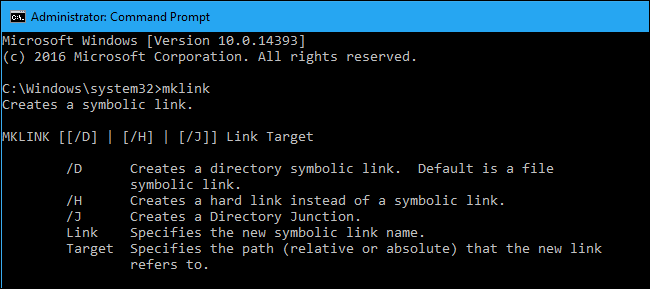
- #Symbolic linker win upgrade
- #Symbolic linker win full
- #Symbolic linker win plus
- #Symbolic linker win windows
However, if you create a directory symbolic link or junction point and open that link or pointer and delete files in the directory, those files are deleted. When you delete a symbolic link or a junction point, it's only removing the link or pointer and not the file or directory to which it's pointing.

Will deleting a symbolic link or junction point delete the linked files or directory? How do I delete a junction point?Ī junction point is only going to be a directory, so you should only need to use the rmdir command to remove it. If you created a symbolic link () of a file, to delete a symbolic link use the del command. If you created a symbolic link using the command shown above, move to the root directory since it is "\Docs" and use the rmdir command. Symlinks or Symbolic Links are symbolic link (also known as a soft link) that consists of a select type of file that serves as a reference to another file. To delete a symbolic link, treat it like any other directory or file. If you love working at the command line, then open up Command Prompt and type in the below command: DIR /AL /S C: Replace C: with the drive letter you. mklink /d files "c:\program files" How do I delete a symbolic link? In the example below, we are creating a symbolic link to the "c:\program files" directory from the current directory.
#Symbolic linker win plus
Link is the path where you want the shortcut/symbolic-link to be, PLUS the name of the. Symbolic links are transparent to users the links appear as normal files or directories, and can be acted upon by the user or application in exactly the same manner. The object being pointed to is called the target. If the file or directory you want to link or point to contains a space in its name, it must be surrounded with quotes. mklink is a keyword used to make symbolic-links between directories. A symbolic link is a file-system object that points to another file system object. How do I create a symbolic link or junction to a directory with a space? Below is an example of what the above junction directory would look like in the command line. Once the junction is created, using the dir command you can see any junction in the directory listing of where the junction was created. If created successfully, you will see a message similar to the example shown below. As seen, we are using the /j switch instead of the /d switch. In Command Prompt, run this command: dir /AL /S c:\.
#Symbolic linker win windows
Open Command Prompt by clicking the Search icon in the Windows taskbar, typing Command Prompt in the Search box, and then clicking Command Prompt in the search results. To create a junction point to a local directory, perform the following command. You can view a list of symbolic links by running a command in Command Prompt.


#Symbolic linker win full
Substitute Link in the command above with the full path with file name and extension you want created as a soft symbolic link at. (see screenshot below) mklink ' Link ' ' Source Target '.
#Symbolic linker win upgrade
After the upgrade to Windows 10, all my symbolic links. Creating soft-links is something that has been possible in Windows for as long as I can remember… but what about hard- and symbolic links? This is also possible, but not through the GUI so a lot of IT Pro’s don’t know this. using mklink in command prompt (as administrator).


 0 kommentar(er)
0 kommentar(er)
